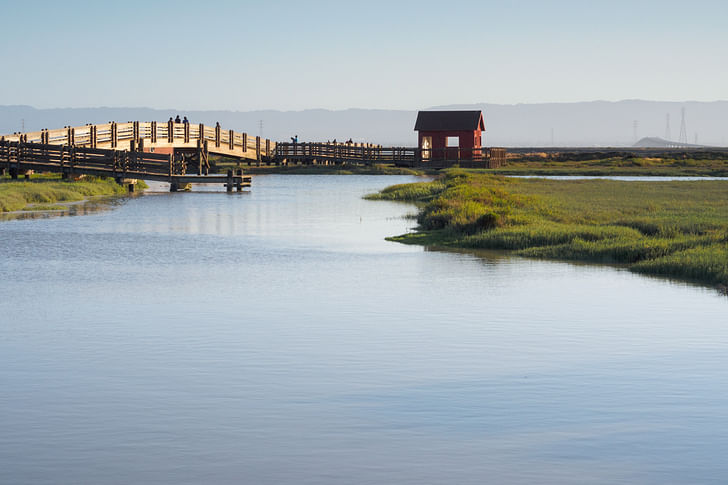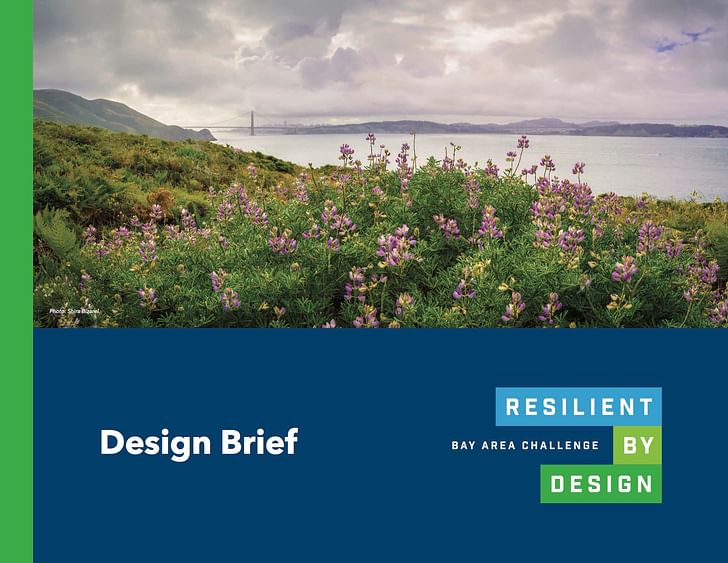

Disasters resulting from climate change, such as sea level rise, often cause billions of dollars of damage. In an era when the United States Federal Government has largely withdrawn from climate change policy, San Francisco Bay Area-based Resilient by Design has released a design brief in hopes of assembling ten teams of architects, engineers, designers and experts to help anticipate and design for the needs of the region before massive devastation occurs. So what architects should apply?
In 2012, Hurricane Sandy swept through New York City, flooding subway tunnels and racking up structural damage costs in the tens of billions. Shortly thereafter, the Department of Housing and Urban Design helped form and fund Rebuild by Design, an initiative dedicated to developing design solutions for specific areas of the region, including a commercial corridor resiliency federal monies for disaster, let alone thoughtful prevention, have largely vanishedproject based in Red Hook that advocated for individual building reinforcements as well as flood barriers close to the sea. However, the changing political climate has meant that federal monies for disaster, let alone thoughtful prevention, have largely vanished. Bay Area-based Resilient by Design, which is modeled closely on Rebuild by Design, is an independently-funded initiative that is currently seeking architects to help identify and design for sites in the region that are at risk for climate change-related disasters.

The preventative nature of the brief makes Resilient by Design unusual. The organizers of the initiative are hoping to create strong relationships between local community members and design professionals in order to more accurately identify sites that require solutions, an alliance that may result in a multi-jurisdictional approach toward design, perhaps changing how other governments conceive of tackling the problem. Although the initiative is locally focused, its preventative nature and community focus is designed to help generate broader applications. As the brief notes, “The Bay Area is generally considered a nine‐county region, but there are few opportunities or requirements for jurisdictions (cities, counties and special districts) to work together on pressing public policy issues. Climate impacts will not be limited to jurisdictional boundaries, meaning some design solutions need to cross jurisdictions.”
This kind of potential broad-based alliance, which is focused more on the problems posed by the climate and less on the arbitrary lines across a map, may help to build a functional coalition in an era when political forces are increasingly pursuing isolationist policies. An emphasis on collective form—which lies at the heart of other sea-level rise research initiatives, such as the Harvard GSD’s Office for Urbanization—may well be the key to creating globally-applicable, effective solutions to disaster prevention. Climate change has no impermeable borders. Creating a model for prevention that recognizes this fact is crucial. Climate change has no impermeable borders. Creating a model for prevention that recognizes this fact is crucial
Resilient by Design has three major phases; after the ten teams are selected from the initial submission stage, a collaborative research phase will begin with the intent of generating three to five potential projects, that, if selected, will merit further development in the design phase. The design phase is slated to begin on December 1st, with the winning projects to be chosen by a jury and funded through an-as-yet-to-be-announced process. “Awarded teams can expect to be in the public spotlight and to receive local and international press for their projects,” the brief explains. “Additionally, it is likely that some or all of projects will continue to be shown in design and architecture exhibitions around the world as demonstrative examples of resilience designs.”

What architects should apply? Although at least one member of each team is expected to be a resident of the Bay Area, the initiative is seeking a fairly wide range of architects and designers. As the brief notes, "All levels of experience are encouraged to apply in order to attract innovative thinking and new approaches. At least one team member must have experience working with publicly funded projects." I asked Amanda Brown-Stevens, the managing director of the Resilient By Design, if she was hoping to attract a range of ages and ideas, from freshly minted, conceptually-oriented grad students to architects with a built portfolio that encompasses decades of projects.
“We really are looking for teams that are motivated and excited to bring their creative energy to this challenge,” she said. “Teams that partner grad students along with firms with more experience are likely to be a great fit for the challenge.”
The initial design team applications are due on July 7th; those who wish to apply can do so here.
Julia Ingalls is primarily an essayist. Her work has appeared or is forthcoming in Slate, Salon, Dwell, Guernica, The LA Weekly, The Nervous Breakdown, Forth, Trop, and 89.9 KCRW. She's into it.
3 Comments
While I'm excited by these two iterations on coastal resilience, I'm waiting for the solutions and speculations for the third and fourth coasts of the United States. These would be radically different solutions given the differences in social and financial capital.
@Marc, surely already familiar to you, but one example of a four coasts approach, is DredgeFests...
I am familiar with Dregefest, but as I understand it (and this may be inaccurate?) the intent and initiatives of the work are based more on instruments and materials.
I'm a little old-fashioned, so I was thinking more along the lines of the TVA and a more holistic approach to the problem of resilience and urbanism in areas that are already distressed. This is in light of the implicit stability present in these densely populated economic drivers. It just seems to me that a sincere application of the term, especially with respect to urbanisms, would address more than that basic scenario.
I think in part it stems from being aware of places like Cairo Il, along with problems related to flood risk and viability. Granted this is a significantly different place/region compared to the two major metropolitan sites, but it is important nonetheless.
Block this user
Are you sure you want to block this user and hide all related comments throughout the site?
Archinect
This is your first comment on Archinect. Your comment will be visible once approved.